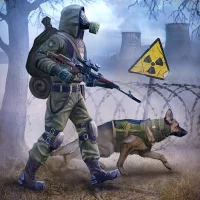
Latest Version
1.4.0
August 04, 2025
TEYES Viet Nam JSC
Tools
Android
0
Free
com.kstudio.pokedex
Report a Problem
More About PokeInfo - PokeDex
Comprehensive Guide to All Generations of PokeData
In the expansive universe of Pokémon, understanding the intricacies of each generation is essential for trainers and enthusiasts alike. This guide delves into the various aspects of PokeData, including type defenses, stats, moves, evolutions, mega-evolutions, locations, and additional information that enriches the Pokémon experience.
Understanding Type Defenses
Type defenses play a crucial role in battles, determining how effective moves are against different Pokémon. Each Pokémon belongs to one or two types, such as Fire, Water, Grass, and more. These types interact in a rock-paper-scissors manner, where certain types are strong against others while being weak to yet another. For instance, Water-type Pokémon are strong against Fire-types but weak against Electric-types.
To maximize your battle strategy, familiarize yourself with type matchups. Here’s a quick overview:
- Fire is strong against Grass but weak against Water.
- Water is strong against Fire but weak against Electric.
- Grass is strong against Water but weak against Fire.
Understanding these interactions can significantly enhance your gameplay, allowing you to choose the right Pokémon for each battle scenario.
Stats and Moves: The Backbone of Pokémon
Each Pokémon has unique stats that define its capabilities in battle. These stats include:
- HP (Hit Points): Determines how much damage a Pokémon can take before fainting.
- Attack: Influences the damage dealt by physical moves.
- Defense: Reduces damage taken from physical attacks.
- Special Attack: Affects the damage dealt by special moves.
- Special Defense: Reduces damage taken from special attacks.
- Speed: Determines which Pokémon attacks first in battle.
Moves are categorized into physical, special, and status moves, each with its own strategic advantages. Selecting the right moves based on your Pokémon's stats can turn the tide of battle. For example, a Pokémon with high Attack should focus on physical moves to maximize damage output.
Evolutions and Mega-Evolutions: Transforming Your Pokémon
Evolutions are a fundamental aspect of Pokémon, allowing them to grow stronger and often change their type. Most Pokémon evolve when they reach a certain level, use specific items, or meet particular conditions. For instance, Charmander evolves into Charmeleon at level 16, and then into Charizard at level 36.
Mega-evolutions take this concept further, providing temporary transformations that enhance a Pokémon's stats and sometimes change its type. To mega-evolve, trainers must possess a Mega Stone specific to that Pokémon. For example, Charizard can mega-evolve into Mega Charizard X or Y, each with unique abilities and stat boosts.
Locations: Where to Find Your Pokémon
Each Pokémon can be found in specific locations across the various regions of the Pokémon world. Understanding where to locate your desired Pokémon is vital for completing your Pokédex. Locations can vary from grassy fields, caves, and oceans to specific events or special areas.
For example, Pikachu can often be found in forests, while Water-type Pokémon like Magikarp are typically found in bodies of water. Additionally, some Pokémon are exclusive to certain games or events, making them rarer and more sought after.
Additional Information: Tips and Tricks for Trainers
Beyond type defenses, stats, evolutions, and locations, there are numerous tips and tricks that can enhance your Pokémon journey:
- Breeding: Breeding Pokémon can yield offspring with unique moves and abilities, allowing for strategic advantages in battles.
- Training: Focus on EV (Effort Value) training to maximize your Pokémon's potential in specific stats.
- Items: Utilize items like Potions, Berries, and TMs (Technical Machines) to improve your Pokémon's performance in battles.
By mastering these elements, trainers can create a well-rounded team capable of tackling any challenge in the Pokémon universe.
Conclusion
Understanding the various aspects of PokeData is essential for any Pokémon trainer. From type defenses and stats to evolutions and locations, each element contributes to a richer gaming experience. By leveraging this knowledge, trainers can enhance their strategies, build powerful teams, and ultimately become Pokémon masters.
Rate the App
User Reviews
Popular Apps










Editor's Choice





























